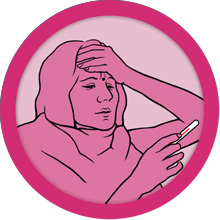 |
1. FEVER
|
|
- High or low grade
- Longer than 30 days
- Continuous, intermittent (on and off), or occasional
- Did the fever rise every day
- Repeated attacks with chills, shaking, sweating, or muscle pain
- Associated with: headache; burning sensation while passing urine; neck stiffness; irritated and does not like light or sound; confusion; drowsiness; coma; rash/blisters
|
|
|
|
|
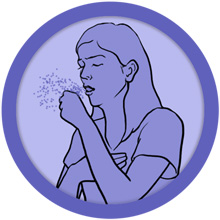 |
2. COUGH
|
|
- Dry, wet (with sputum), bloody (rusty), or foul smelling
- Longer than 30 days
- Worse during day or night
- With wheezing or in-drawing of chest (use local language)
- Any pain during cough or deep breath
- Any pain at the sides of the chest wall
- Associated with: night sweats; evening rise of temperature; vomiting; hoarseness of voice
|
|
|
|
|
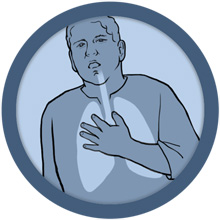 |
3. BREATHLESSNESS
|
|
- What brings it on (for example, allergy or chest infection)
- Progression: did the person feel breathlessness only during exertion? Did it progressively worsen so that breathlessness occurred also at rest?
- Worse after lying flat, and relieved by sitting up
- Continuous or in episodes/attacks
- Associated with: night sweats; evening rise of temperature; vomiting; hoarseness of voice
|
|
|
|
|
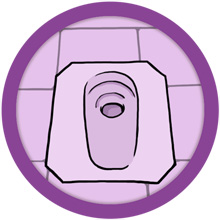 |
4. DIARRHOEA/DYSENTERY IN STOOLS
|
|
- Were the stools liquid or semisolid
- Did stools contain mucus, or look like rice water
- Longer than 30 days
- Painless or painful
- Large quantity or not
- Blood in the stool, red or black in colour
- How many times a day at worst
- Associated with: vomiting; very thirsty; dehydration; sunken eyes
|
|
|
|
|
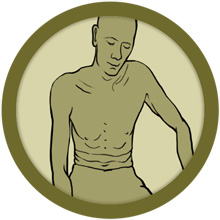 |
5. WEIGHT LOSS
|
|
- Loss of weight rapid in last 2-3 months
- Associated with prolonged fever for more than 1 month (either constant or continuous)
- Diarrhoea for more than 1 month
- Persistent cough for more than 1 month
- Swelling in arm pits, neck, groin
- Itching and skin rash
- White sores or white patches in mouth
- History of tuberculosis
|
|
|
|
|
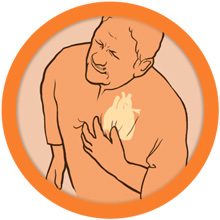 |
6. CHEST PAIN
|
|
- Onset: sudden or gradual
- Did pain last more than 24 hours or less than 24 hours
- Location: chest, upper stomach, or back
- Did pain spread? To left arm, deep central chest, hand, shoulder, or back?
- Pain worse with walking, exertion, cough or deep breath, touching the area, or eating
- Associated with: sweating; vomiting
|
|
|
|
|
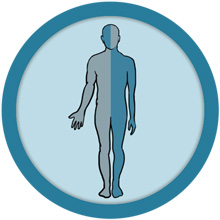 |
7. PARALYSIS/STROKE
|
|
- Onset: over minutes, hours, or noticed after waking up
- Accompanied by sudden loss of consciousness
- Which part of body was paralyzed (i.e., half of body, one arm, right/left face)?
- Time of onset: during activity or in sleep
- Associated with: vomiting; headache; loss of memory; loss of vision or speech; neck stiffness
|
|
|
|
|
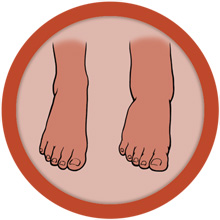 |
8. OEDEMA (SWELLING)
|
|
- Location: hands, feet, abdomen, or elsewhere
- Onset: sudden or gradual
- Worse at night or morning
- Associated with: worse with walking; fatigue; feeling the heart beat faster; nausea; loss of appetite
|
|
|
|
|
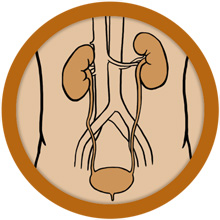 |
9. URINARY PROBLEMS
|
|
- Reduced urine amount or more frequent passage of urine
- Burning sensation while urinating
- Urine contained pus or blood
- Intense desire to pass more urine even after the bladder has been emptied
- Associated with: pain in lower abdomen; tenderness in the side of abdomen; sudden onset of pain in one or both loins, spreading to lower abdomen; paleness; nausea; vomiting; became dull, drowsy or unconsciousness
|
|
|
|
|
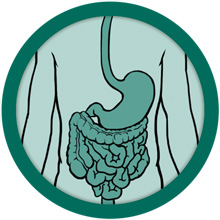 |
10. GASTRO-INTESTINAL TRACT (ABDOMINAL) PROBLEMS
|
|
- Was there pain? Describe the location; type (i.e., burning); and onset (sudden or gradual)
- If pain, describe periodicity: did it occur in episodes or continuous? How long each episode?
- Relationship to food: more pain on empty stomach? Was it relieved after taking food?
- Difficulty in swallowing solid or liquid food
- Did pain wake person from sleep?
- Onset of abdominal distension: sudden or gradual
- Associated with: loss of appetite, nausea; constipation; black stools; vomiting with blood; sweating; history of surgery or trauma or cancer; history of lump/mass in abdomen; alcohol abuse
|
|
|
|
|
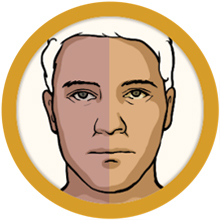 |
11. JAUNDICE (YELLOWNESS IN THE WHITE PART OF EYES OR SKIN)
|
|
- What become yellow: eyes or skin; was urine dark yellow/brown?
- Onset: yellowness came first followed by other illness OR illness came first followed by yellowness
- Associated with: vomiting blood; alcohol abuse; history of cancer
|
|
|
|
|
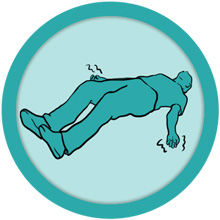 |
12. SEIZURES/ FITS
|
|
- Previous episodes of sudden jerky movements of arms or legs
- Loss of consciousness
- Awake between fits or not
- Associated with: rolling of eye balls; frothing of mouth; loss of memory; bit tongue; bed wetting; confused; history of head injury
|
|
|
|
|
|
|